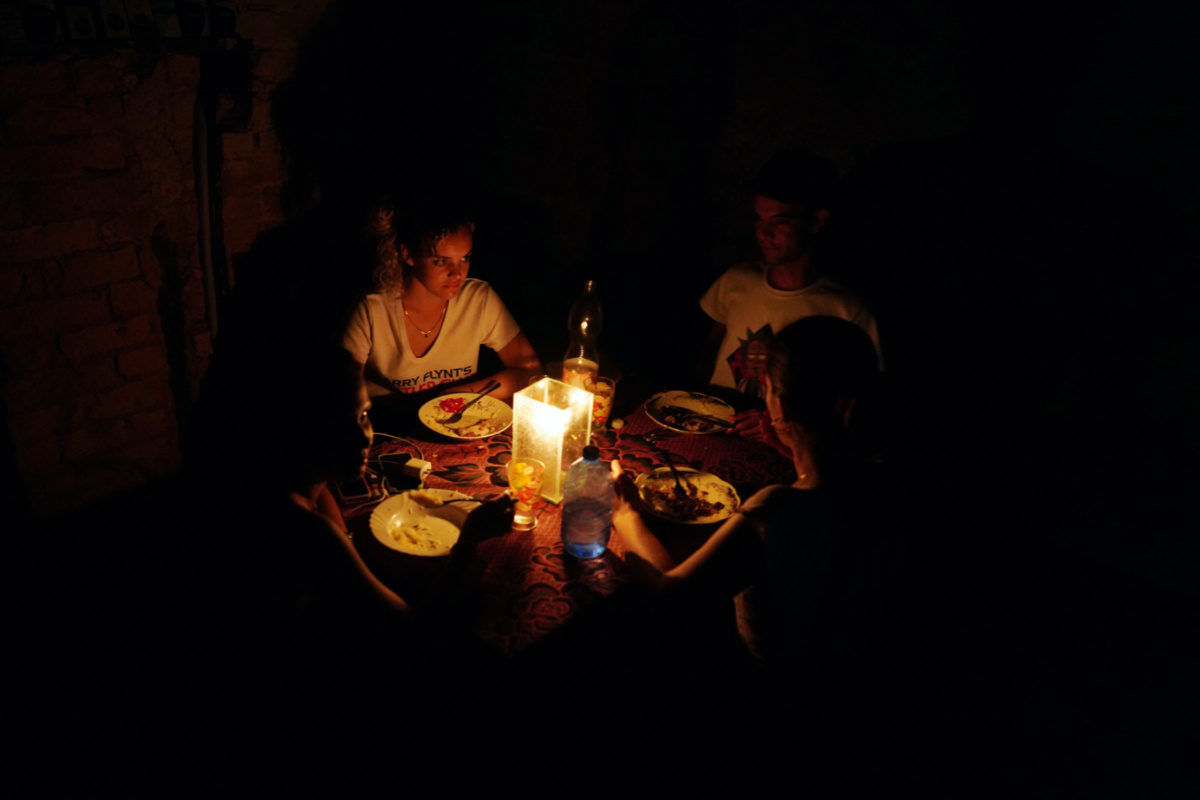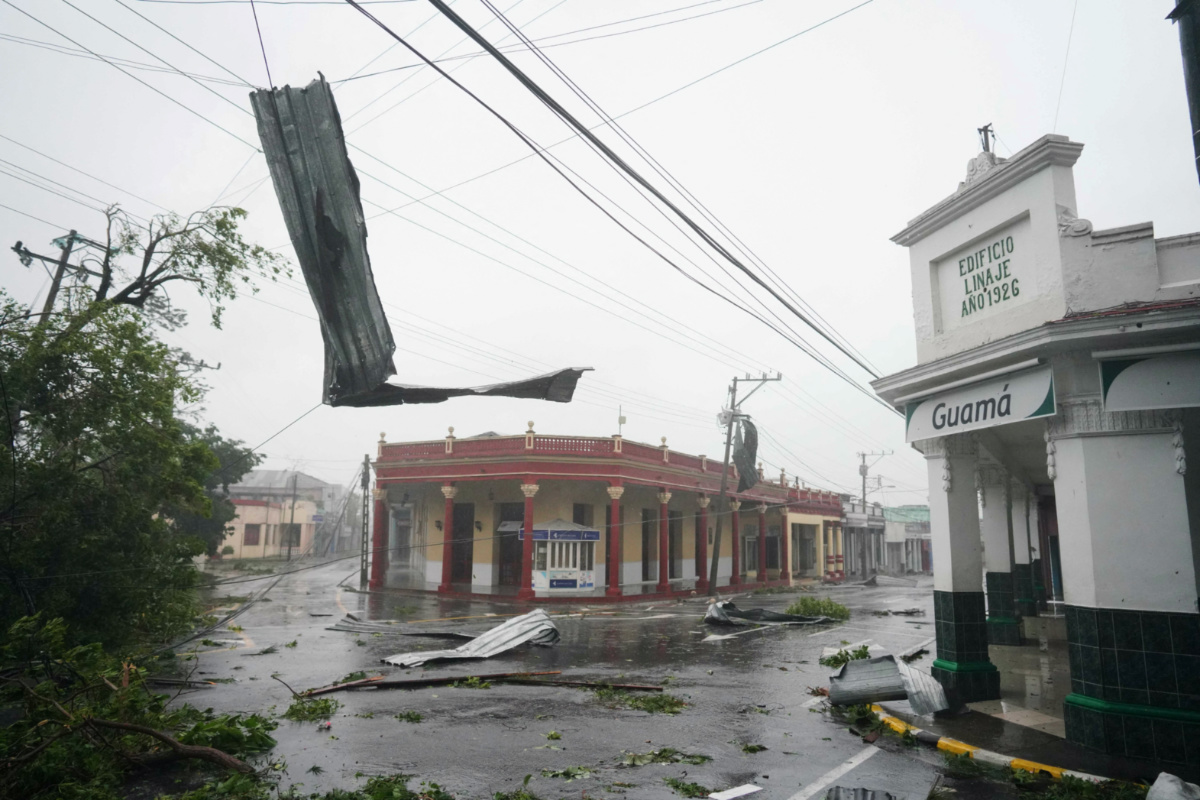Havana, Cuba
Reuters
Cuba had begun to progressively restore power to the capital Havana by early on Thursday, according to Reuters witnesses and official reports, but vast swaths of the Caribbean island nation still remained in the dark following the passage of Hurricane Ian.
Much of the island of 11 million people was entering its third day without power on Thursday after the brawling storm made landfall, knocking out high-tension wires, flattening homes and obliterating agricultural fields.

A family has dinner during a blackout in the aftermath of Hurricane Ian in Havana, Cuba, on 28th September. PICTURE: Reuters/Alexandre Meneghini
At least three people died in the storm in Cuba, state-run media reported.
Officials with the state power generator said they were making progress but still in the early stages of a “complex” recovery.
“In the operation of an electrical system, one of the most complex processes is restoring power from zero,” said Pavel Angulo, a director of Cuba’s National Electric Union, on a state-run news broadcast late on Wednesday.
Cuba’s grid relies on decrepit, Soviet-era oil-fired generation plants that fail repeatedly, further complicating recovery. The country has also struggled to obtain fuel for those plants, as costs have risen with the Ukraine conflict and amid harsh sanctions from the United States.
Angulo said workers had already fired up several of its generation plants and was attempting to reincorporate them into the national grid.
“As soon as the first [plants] are incorporated, the rest of the units will be incorporated into the system in a much more accelerated way,” Angulo said.
State-run media reported at mid-day on Thursday parts of Havana had been reconnected to the grid but that some circuits and lines were still damaged, stalling efforts in some areas.
Throughout densely populated Central Havana on Thursday, neighbours sat in doorways looking for fresh air after a stuffy night inside cavernous apartment blocks.
Sultry temperatures and abundant mosquitoes – combined with the threat of mosquito-borne Dengue fever – had nerves on edge.
“If this continued for much longer it would have been very serious,” said Carlos Herrera, a 49-year-old state worker. “Thankfully it looks as though they are finding solutions.”
As light returned, gas stations reopened, and lines for fuel swelled to several hours long at the few available pumps.

Debris hang on the street as Hurricane Ian passes through Pinar del Rio, Cuba, on 27th September. PICTURE: Reuters/Alexandre Meneghini
Farm disaster
Outside Havana, most were not so fortunate. West of the capital, the lights were still out, and crews continued to work to clear roads, remove trees and repair downed power lines.
Helicopter footage on state-run television showed Pinar del Rio, which took a direct hit from the storm, in rubble and wreckage, with roofs strewn about farm fields and backyards and tobacco fields flooded.
State-run media reported that in some towns and small cities cross the province as many as 85 per cent of the homes had suffered serious damages.
We rely on our readers to fund Sight's work - become a financial supporter today!
For more information, head to our Subscriber's page.
Ian hit the tobacco industry – one of Cuba’s few lucrative export industries, particularly hard. Virtually all of the tobacco drying houses in some areas had been flattened by the storm, industry officials said, soaking their raw material.
There were no official estimates of when power would return to the Pinar del Rio region.
Even before Hurricane Ian hit, Cubans were accustomed to daily power outages, sometimes of eight hours or more, but the prospect of a prolonged blackout would be a major blow to the crisis-racked nation, where food, fuel and medicine are in short supply.
Officials said the country’s precarious energy situation, which led to large shortfalls in generation prior to the storm, would not change even if power were immediately restored.
Hurricane Ian exited Cuba on Tuesday and evolved into one the mightiest to hit the US mainland in recent years, flooding communities and leaving more than two million homes and businesses without power along Florida’s Gulf Coast.
– Additional reporting by NELSON ACOSTA






